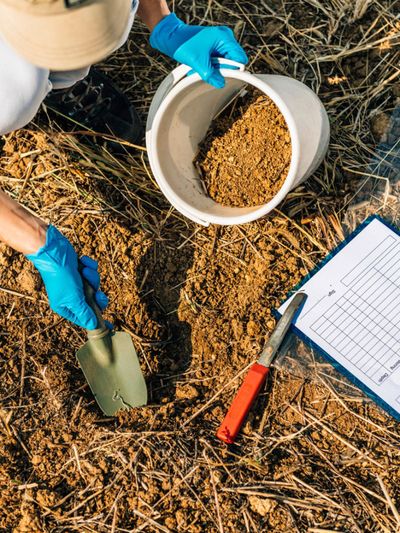Why Test Soil in the Garden?
Most soil nutrients are readily found in the soil provided that its pH level is within the 6 to 6.5 range. However, when the pH level rises, many nutrients (like phosphorus, iron, etc.) may become less available. When it drops, they may even reach toxic levels, which can adversely affect the plants. Getting a soil test can help take the guesswork out of fixing any of these nutrient issues. There’s no need to spend money on fertilizers that aren’t necessary. There’s no worry of over fertilizing plants either. With a soil test, you’ll have the means for creating a healthy soil environment that will lead to maximum plant growth.
What Does a Soil Test Show?
A soil test can determine the current fertility and health of your soil. By measuring both the pH level and pinpointing nutrient deficiencies, a soil test can provide the information necessary for maintaining the most optimal fertility each year. Most plants, including grasses, flowers, and vegetables, perform best in slightly acidic soil (6.0 to 6.5). Others, like azaleas, gardenias, and blueberries, require a somewhat higher acidity in order to thrive. Therefore, having a soil test can make it easier to determine the current acidity so you can make the appropriate adjustments. It will also allow you to fix any deficiencies that may be present.
How Often Do You Do a Soil Test?
Soil samples can be taken at any time of the year, with fall being preferable. They are normally taken annually or simply as needed. While many companies or gardening centers offer soil testing kits, you can usually obtain a soil test for free or low cost through your local county extension office. Alternatively, UMASS Soil and Plant Tissue Testing Laboratory allows you to mail a soil sample in and they will send a soil report back based on your soil test results. Avoid having the soil tested whenever the soil is wet or when it’s been recently fertilized. To take a sample for testing garden soil, use a small trowel to take thin slices of soil from various areas of the garden (about a cup’s worth each). Allow it to air dry at room temperature and then place it into a clean plastic container or Ziploc baggie. Label the soil area and date for testing. Now that you know the importance of getting a soil test, you can better manage your garden plants by making the appropriate adjustments from your soil test results. Take the guesswork out of fertilizing by testing garden soil today.
